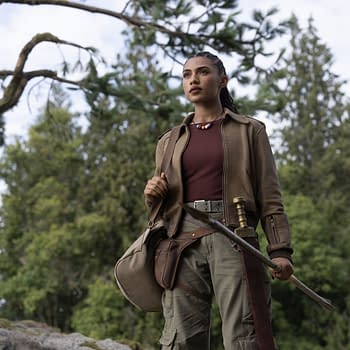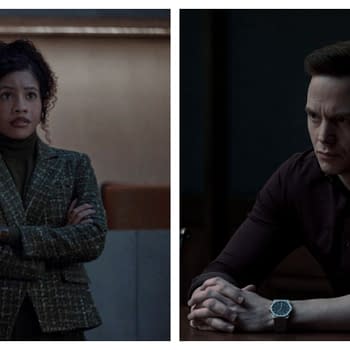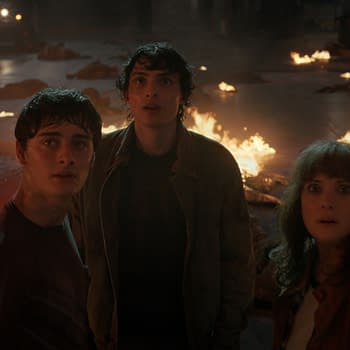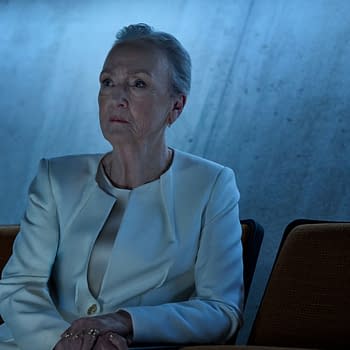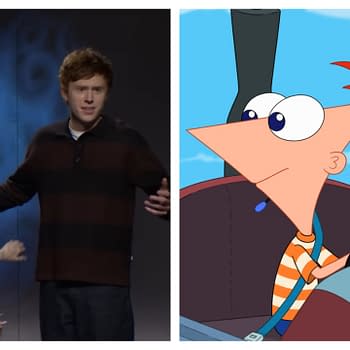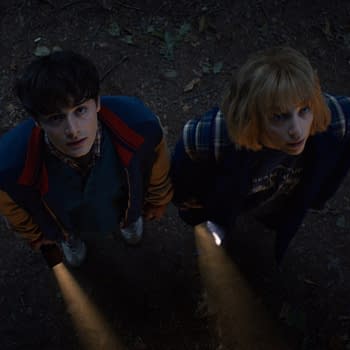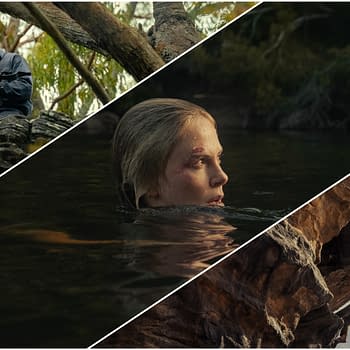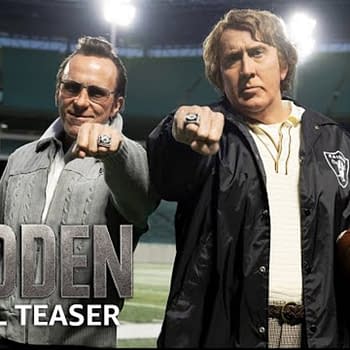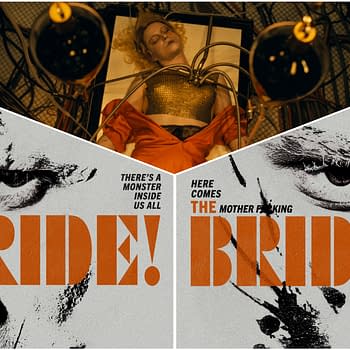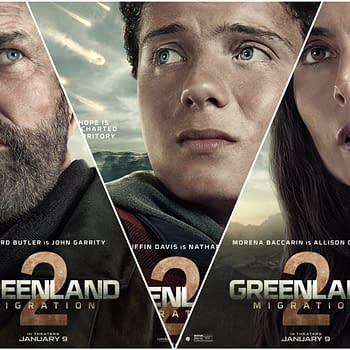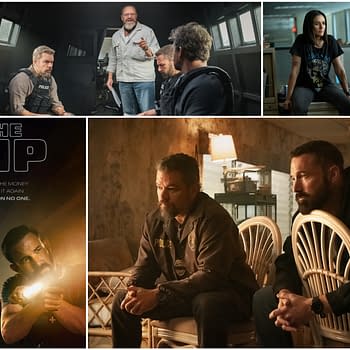Posted in: Exclusive, Horror, Interview, Movies | Tagged: Beast of War, Kiah Roache-Turner, Well Go USA Entertainment
Beast of War Director on Stunts, Shark, Diving Further into War-Horror
Director Kiah Roache-Turner (Nekrotronic) spoke with us about his survival horror-war film, Beast of War, including production challenges, stunts & more.
Article Summary
- Director Kiah Roache-Turner reveals the ambitious production behind Beast of War's massive indoor water tank.
- Blending WWII action with survival horror, Beast of War features a suspenseful shark-driven storyline.
- Practical effects dominate, including a half-ton animatronic shark, with strategic use of CG for wide shots.
- Roache-Turner teases a new WWII monster film, expanding his war-horror genre with fresh settings and creatures.
Writer and director Kiah Roache-Turner is versatile when it comes to horror, whether it's a zombie apocalyptic one in the Wyrmwood franchise, the supernatural horror comedy Nekrotronic (2018), or the spider-themed Sting (2024). His latest blends World War II drama and plausible monster horror with a shark in the Jaws-inspired Well Go USA's Beast of War. When their boat is sunk while crossing the Timor Sea during World War II, a young troop of Australian soldiers must find a way to survive the harsh seas on a quickly shrinking life raft. Hundreds of miles from anywhere, they must confront interpersonal conflicts, enemy attacks, and the advances of one very large, very hungry great white shark. Roache-Turner spoke to Bleeding Cool about having to go above and beyond during production to build a huge indoor tank to accommodate filming, balancing practical and CG effects, and diving further into the survival horror-war genre.
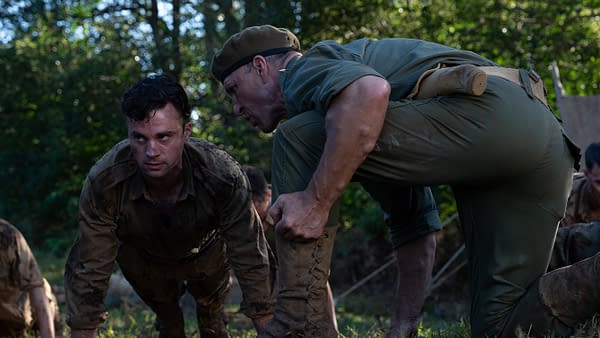
John Sparke in "Beast of War" (2025). Image courtesy of Well Go USA Entertainment
Beast of War Director Kiah Roache-Turner on Production Accommodations, Special Effects, and More
What was the most difficult sequence to film?
This film was, from a production point of view, difficult. One of the most difficult things was building the tank. There wasn't an indoor tank in Australia big enough to do what we wanted. They were all 25 meters in circumference, and the bigger ones are outdoor tanks, which wouldn't have filled our purpose, because we needed an indoor one. We had the fog as a constant element, and we needed a room big enough to fill it with fog and a tank big enough to do what we physically needed it to do.
We needed a 40-meter tank, and that was building a water tank like that is like being an architect and making a building. It just took months upon months and was incredibly expensive and difficult. The most difficult sequence was one I called, "The Floor is Lava," where the guy, I reckon, could jump from debris to debris to get to that motorboat without getting my feet wet. He bunny hops through the debris to get to a motorboat that might be able to get home. There was a lot of stunt work involved in that.
We had to build the debris, make sure it could float, hold a human being on top of it, and halfway across, SPOILER ALERT! The shark attacks, and that attack was probably the most difficult since it was awkward to film. He's hanging off a piece of debris. The shark is jumping onto the debris and tipping it upwards so that it can tip him into its mouth. It was a confluence of stunts, production design, and a huge half-ton animatronic shark. The lighting was difficult, and you're in a pretty deep tank of water. That's probably the hardest thing I've ever filmed, but we got through it, and it looks pretty good. I'm happy with the results.
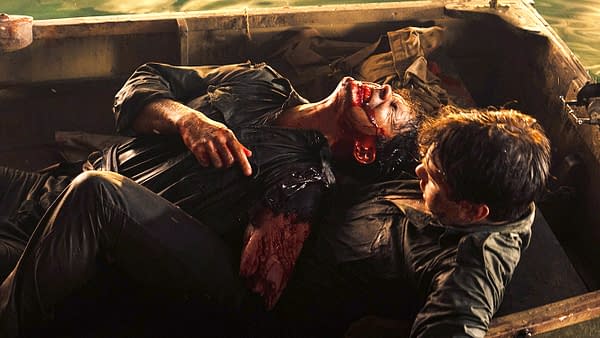
Since you brought up the shark, I was wondering how much of that relied on practical effects and how much was CG?
Most of it's practical. We built a company called Formation Effects, led by Steve Boyle and his team, which built three big sections of practical shark. We've got a giant puppet head that you put like a stunt diver into, and he operates the jaws. We've got a submersible fin that can go up and down. It's basically a giant submarine with a fin on the top, which must be towed through the water so that you see these big waves of water on either side of the fin to show that there's a creature the size of a bus under that fin.
We had an attack head, that's the top half of a shark, which runs on a rail underneath the water. It explodes up out of the water, and its animatronic teeth chomp up and down. That was the most difficult piece. Anytime you're underwater and you see the shark in a wide shot, it's digital. We have some digital effects in there; you have to sometimes shoot stuff that's physically impossible to do with puppetry.
What's next for you?
I'm going to do another World War II film with Blake Northfield. It's set on the Eastern Front in Europe, again in 1942. It's similar in worlds where it's soldiers and monsters, but a completely different context, a completely different cast, and a completely different monster. It's semi-franchisable with the idea of beasts and war, and the thing I like about that as a premise is that I can go anywhere I want. I can do Spartan soldiers versus a bear if I want. I've enjoyed playing in this world with Beast of War, and I'm going to continue that into the next one.
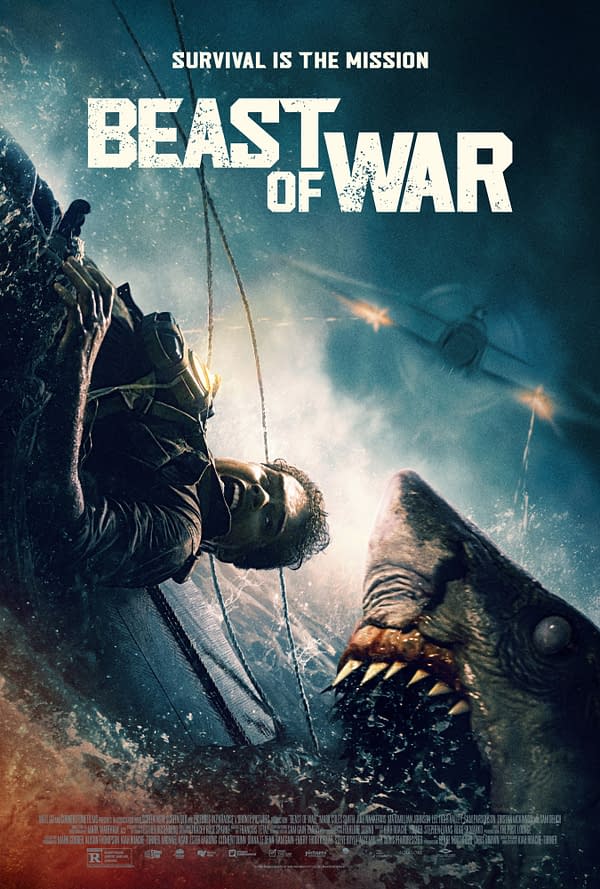
Well-Go USA's Beast of War, which stars Mark Coles Smith, Joel Nankervis, Sam Delich, Lee Tiger Halley, Sam Parsonson, Maximillian Johnson, Tristan McKinnon, and Aswan Reid, is available in theaters and on digital.






